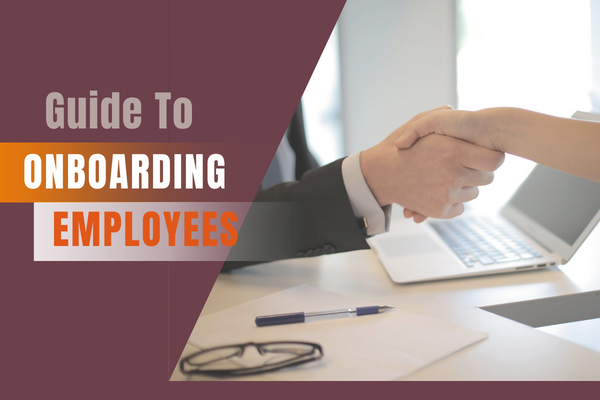BOOKKEEPING ARTICLES AND RESOURCES

Guide to Onboarding Employees
New hires may feel vulnerable, out of place, worried, and eager to impress. Rather than providing a caring atmosphere, many companies make their new workers into true attack dogs in a few weeks, with minimal training and huge expectations. So here's a guide to onboarding employees and onboarding automation.
Given that the workforce of the current generation will be in a perpetual state of upheaval, delivering effective onboarding is critical to keeping outstanding employees.
What Is Onboarding?
Onboarding refers to the process of integrating new employees into the firm. It consists of activities that help new employees to complete the first new-hire orientation process and learn about the company's structure, culture, vision, purpose, and values.
For some businesses, the onboarding process comprises around two days of activities. For others, the process may consist of a series of activities that span one or several months.
Onboarding Automation
It is the use of onboarding automation to improve procedures. Its implementation entails a platform that can listen for a preset business event and, when it occurs, activates actions that can operate across your apps, data, and teams.
Only 12% of employees say their company does a good job onboarding new employees. Employers should take this statistic seriously since bad onboarding experiences may negatively influence employee retention, productivity, and the employer's brand.
Onboarding automation can handle the whole range of processes necessary to prepare for and onboard a new employee, including:
Providing them with the necessary applications and equipment
Organizing a range of orientation sessions
Organizing and disseminating all onboarding paperwork that must be inspected and approved
Linking them with a supervisor or a colleague
Sending a box with business goodies
Distributing a survey to gather input on the onboarding process
Disadvantages Of Manual Employee Onboarding
Onboarding automation can help you avoid unpleasant onboarding experiences. Here are the drawbacks of manual employee onboarding.
The Onboarding Procedure Would Seem Impersonal
Your employees must begin interacting with coworkers as soon as possible to be effective. However, when your HR team performs individual duties manually, this need becomes impossible to meet.
It entails introducing recruits to their coworkers, scheduling one-on-one lunches, planning offsites, and so on—all of which demand too much of an HR staff that is already stretched thin.
Deteriorating Employee Experience
As your workers begin their new roles, they will have many questions. They are either disregarded or waste too much time hunting for answers if there is no convenient, automatic way to provide them.
Similarly, they may repeatedly ask colleagues (particularly those in IT) the same questions, which can easily consume the latter's time and hinder them from executing other vital business activities.
Slow Administrative Productions
Administrative duties are handled slowly, leaving your company open to substantial errors. Manually granting staff access to facilities, applications, and equipment may be time-consuming and difficult to execute properly at scale.
As a result, most projects may be delayed, and even if they are finished, they may be poorly done. The consequences can be severe in any instance. For example, recruits may mistakenly acquire access to secret employee data, potentially putting your organization in legal jeopardy.
Additionally, completing each new hire's I-9 form may take longer than three days from their start date, exposing your company to hefty penalties.
Program Components
While there are several methods to construct a program, the following elements are essential to this process:
Preboarding
Some companies begin the procedure after the offer has been approved before the launch date. Employers may aim to develop programs to link new staff to the company in these instances.
Orientation
The objective of new-hire orientation is to educate the new employee about the organization's structure, mission, and values, as well as go through the employee handbook and highlight critical policies.
It also involves new workers in the completion of needed employee paperwork, study of essential administrative processes, and mandated training. For a new employee, this method may be intimidating, so stretch it out over a few days or a week if possible.
Foundation Building
Throughout the onboarding process, an organization's unique pillars of culture, purpose, prospective employees, brand, and other critical foundations must be lived and reflected consistently.
Recruits will not absorb it in the first week or month. It will take months to study and put what you've learned into practice.
Identifying the organization's enduring principles and aspirational objectives will aid in the construction of an onboarding program. Generally, effective onboarding should take months to complete.
Mentoring and Buddy Systems
Many companies have structured or informal supervision or pairing systems to help new employees get started. The manager or HR might choose mentors and pals, or they can be volunteers.
Recent recruits are assigned to be friends in certain firms because they have personal knowledge of what has benefitted them the most. The idea is to connect the new employee with someone who can help but isn't in a position of direct accountability or acting in an official capacity.
Routine duties are usually delegated to the mentor or buddy. This might entail giving instructions to the restrooms or the cafeteria and supporting the employee in comprehending the nuances of working in the organization.
Reboarding
Employees are updated on existing and new projects, as well as acclimated to new team cultures and connections, during reboarding, which helps people grasp the various expectations for job performance, whether they are returning to work or are through an internal transfer/promotion.
Reboarding can also boost productivity by helping employees to reconnect emotionally and socially with their coworkers and their jobs, resulting in higher levels of engagement and job satisfaction.
Conclusion
Onboarding has evolved into a critical component of a company's performance, and it is intricately linked to employees, management, and other HR operations. For example, if onboarding is poor or non-existent, new workers are twice as likely to seek employment elsewhere.
Effective workflow owing to greater learning, enhanced motivation, improved employee experiences, and effective communication between work staff and management are just a few advantages of good onboarding. Generally, it all adds up to improved business results.

Guide to Onboarding Employees
New hires may feel vulnerable, out of place, worried, and eager to impress. Rather than providing a caring atmosphere, many companies make their new workers into true attack dogs in a few weeks, with minimal training and huge expectations. So here's a guide to onboarding employees and onboarding automation.
Given that the workforce of the current generation will be in a perpetual state of upheaval, delivering effective onboarding is critical to keeping outstanding employees.
What Is Onboarding?
Onboarding refers to the process of integrating new employees into the firm. It consists of activities that help new employees to complete the first new-hire orientation process and learn about the company's structure, culture, vision, purpose, and values.
For some businesses, the onboarding process comprises around two days of activities. For others, the process may consist of a series of activities that span one or several months.
Onboarding Automation
It is the use of onboarding automation to improve procedures. Its implementation entails a platform that can listen for a preset business event and, when it occurs, activates actions that can operate across your apps, data, and teams.
Only 12% of employees say their company does a good job onboarding new employees. Employers should take this statistic seriously since bad onboarding experiences may negatively influence employee retention, productivity, and the employer's brand.
Onboarding automation can handle the whole range of processes necessary to prepare for and onboard a new employee, including:
Providing them with the necessary applications and equipment
Organizing a range of orientation sessions
Organizing and disseminating all onboarding paperwork that must be inspected and approved
Linking them with a supervisor or a colleague
Sending a box with business goodies
Distributing a survey to gather input on the onboarding process
Disadvantages Of Manual Employee Onboarding
Onboarding automation can help you avoid unpleasant onboarding experiences. Here are the drawbacks of manual employee onboarding.
The Onboarding Procedure Would Seem Impersonal
Your employees must begin interacting with coworkers as soon as possible to be effective. However, when your HR team performs individual duties manually, this need becomes impossible to meet.
It entails introducing recruits to their coworkers, scheduling one-on-one lunches, planning offsites, and so on—all of which demand too much of an HR staff that is already stretched thin.
Deteriorating Employee Experience
As your workers begin their new roles, they will have many questions. They are either disregarded or waste too much time hunting for answers if there is no convenient, automatic way to provide them.
Similarly, they may repeatedly ask colleagues (particularly those in IT) the same questions, which can easily consume the latter's time and hinder them from executing other vital business activities.
Slow Administrative Productions
Administrative duties are handled slowly, leaving your company open to substantial errors. Manually granting staff access to facilities, applications, and equipment may be time-consuming and difficult to execute properly at scale.
As a result, most projects may be delayed, and even if they are finished, they may be poorly done. The consequences can be severe in any instance. For example, recruits may mistakenly acquire access to secret employee data, potentially putting your organization in legal jeopardy.
Additionally, completing each new hire's I-9 form may take longer than three days from their start date, exposing your company to hefty penalties.
Program Components
While there are several methods to construct a program, the following elements are essential to this process:
Preboarding
Some companies begin the procedure after the offer has been approved before the launch date. Employers may aim to develop programs to link new staff to the company in these instances.
Orientation
The objective of new-hire orientation is to educate the new employee about the organization's structure, mission, and values, as well as go through the employee handbook and highlight critical policies.
It also involves new workers in the completion of needed employee paperwork, study of essential administrative processes, and mandated training. For a new employee, this method may be intimidating, so stretch it out over a few days or a week if possible.
Foundation Building
Throughout the onboarding process, an organization's unique pillars of culture, purpose, prospective employees, brand, and other critical foundations must be lived and reflected consistently.
Recruits will not absorb it in the first week or month. It will take months to study and put what you've learned into practice.
Identifying the organization's enduring principles and aspirational objectives will aid in the construction of an onboarding program. Generally, effective onboarding should take months to complete.
Mentoring and Buddy Systems
Many companies have structured or informal supervision or pairing systems to help new employees get started. The manager or HR might choose mentors and pals, or they can be volunteers.
Recent recruits are assigned to be friends in certain firms because they have personal knowledge of what has benefitted them the most. The idea is to connect the new employee with someone who can help but isn't in a position of direct accountability or acting in an official capacity.
Routine duties are usually delegated to the mentor or buddy. This might entail giving instructions to the restrooms or the cafeteria and supporting the employee in comprehending the nuances of working in the organization.
Reboarding
Employees are updated on existing and new projects, as well as acclimated to new team cultures and connections, during reboarding, which helps people grasp the various expectations for job performance, whether they are returning to work or are through an internal transfer/promotion.
Reboarding can also boost productivity by helping employees to reconnect emotionally and socially with their coworkers and their jobs, resulting in higher levels of engagement and job satisfaction.
Conclusion
Onboarding has evolved into a critical component of a company's performance, and it is intricately linked to employees, management, and other HR operations. For example, if onboarding is poor or non-existent, new workers are twice as likely to seek employment elsewhere.
Effective workflow owing to greater learning, enhanced motivation, improved employee experiences, and effective communication between work staff and management are just a few advantages of good onboarding. Generally, it all adds up to improved business results.

Quick Links
Why Choose Us
How does it work
Pricing
Social Media Links
© 2024 – Bottcher Group of Companies
All Right Reserved



